Beltane is one of the main four pagan holidays associated with the ancient annual calendar.
These holidays act as markers identifying the changing of the seasons.
Beltane celebrates the transition from spring to summer. Learn how you can celebrate Beltane in this article.
It explores some of the traditions and rituals for Beltane that you can take part in or try out yourself.
This post may contain affiliate links. If you click on one of them, we might receive a small commission (at no extra cost to you). Thanks for your support!
Table of Contents
What is Beltane?
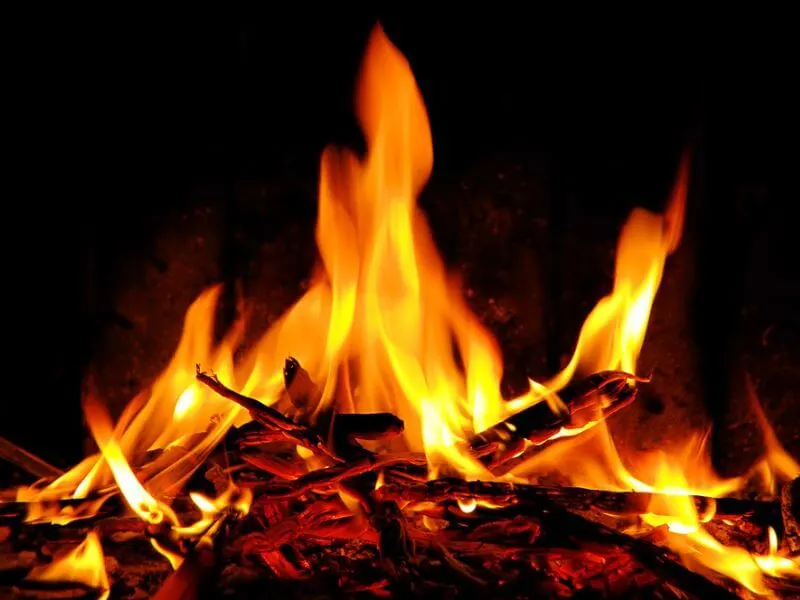
Beltane is an ancient festival that has its origins as a pagan holiday.
It is one of the four fire festivals spread through the ancient year marking the transition between the seasons.
The other three festivals are:
- The spring festival of Imbolc
- The summer harvest festival of Lughnasadh
- The Celtic New Year festival of Samhain (Marking the beginning of the dark period of the year.)
The Beltane pagan holiday marks the coming of summer.
Fire is an integral part of the festival and may have even contributed to the Beltane meaning name. (The Irish word for fire is tine.)
When is Beltane?
Beltane is typically celebrated on May 1.
Often the celebrations start at sundown on April 30 and last until sundown the following day on May 1.
The beginning of May is a time of the year when the natural world experiences great change and growth.
Depending on the belief, some people celebrate this festival on the exact halfway point between the Spring Equinox and Summer Solstice.
For these people, for example some Neopagans, this means that the Beltane date varies slightly each year.
Where was Beltane celebrated?
Ancient Gaelic people primarily in Ireland, Scotland and the Isle of Man recognized this important change in the seasonal calendar.
What does Beltane celebrate?
Beltane was seen as a celebration of the upcoming summer, better weather, longer days and hopefully a good harvest.
The other key aspect of the festival of Beltane is its emphasis on protection from the fairies or other magical folk.
Around Beltane, the fairies were thought to move from their winter locations to the summer ones and the chances of encountering them were higher.
Some of the Beltane traditions and rituals were to avoid detection by the fairy folk, whereas others were used to appease them for the coming year.
Celebrating Beltane
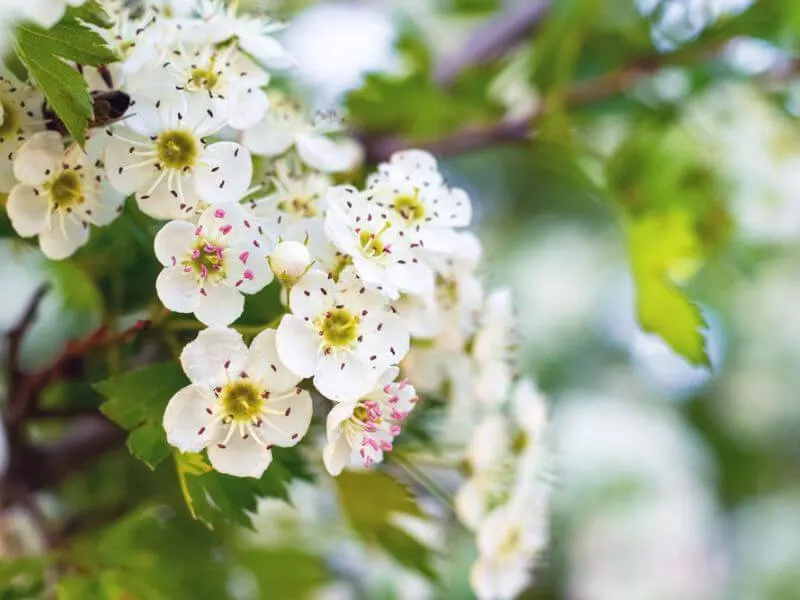
Beltane is a very old tradition tracing its origins back to its pagan roots, that is still very applicable today.
The festival of Beltane focuses on the changing of the seasons from spring to the summer.
It is a time of growth, new life, fertility and abundance. All of these aspects are central to the celebration.
In our busy lives, seasonal changes can sometimes bypass us without little notice.
Beltane is a time where we can once again reconnect with nature.
Kids are naturally curious so it is a great way to spark their interest in the world around them as well.
Some simple traditions associated with the Beltane rituals can bring about some balance in our lives.
By celebrating Beltane and sharing your knowledge of the fire festival with friends and family, you can help promote the ancient pagan holiday.
How to prepare for Beltane
Before the start of Beltane, it might be worth reading up about the festival itself.
Discover more about the festival, including the history and meaning of Beltane, Beltane Goddesses and more in the Related Article: Beltane
How to celebrate Beltane
Delve into the more traditional rituals and customs associated with Beltane
Related Article: Rituals for Beltane
This in depth guide will give you more information about the origins and history behind these Beltane rituals.
Beltane Bonfires
Bonfires are a traditional way to mark the occasion of Beltane and one of the main Beltane symbols.
In ancient times, bonfires would have been lit on the eve of Beltane (typically April 30).
Prominent locations would have been chosen for this act.
Mounds and hilltops were generally preferred as the fires could be viewed from great distances.
Usually, the sacred flame from the main Beltane fire would have been used to light the fires in the homes of the people within the community.
In some areas, it is still possible to attend bonfires for Beltane.
Bonfires for Beltane are officially organized in some places, so it is worth investigating beforehand if there is one in your area.
Depending on where you live, it may not be possible to have your own bonfire or own small fire.
Lighting a candle could be your own simpler way to celebrate the ancient ritual of fire for Beltane.
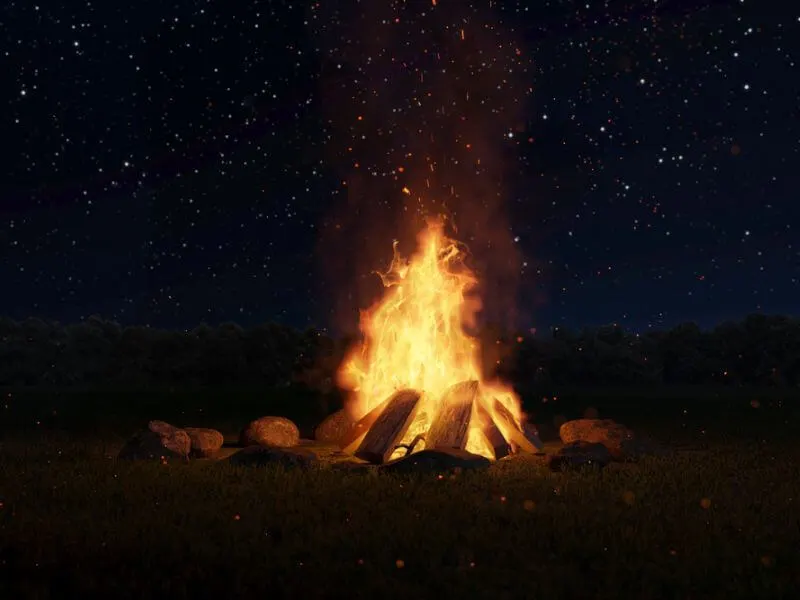
Beltane Fire Celebration
One of the biggest Beltane celebrations takes place on Calton Hill in Edinburgh, Scotland.
The Beltane Fire Society organizes a large bonfire and procession to celebrate Beltane on April 30.
Street Performers and other acts also help to bring atmosphere to this modern take on the festival.
This event is open to the public, but it is advised to get your tickets beforehand, as it is quite popular.
Gathering Flowers
An old Beltane tradition is collecting flowers on the eve of Beltane.
Usually the task of collecting flowers was given to children.
They would gather the Irish flowers of the season and then spread them around thresholds, windowsills and farm buildings.
This was to protect all inside the building from the fairies or unwanted magic.
Sometimes the branches of native Irish trees hawthorn, hazel or rowan trees were also hung outside the houses for the same
You too could gather some flowers or branches for the Beltane celebrations.
(It is also a great way to get kids interested in the Beltane festival!)
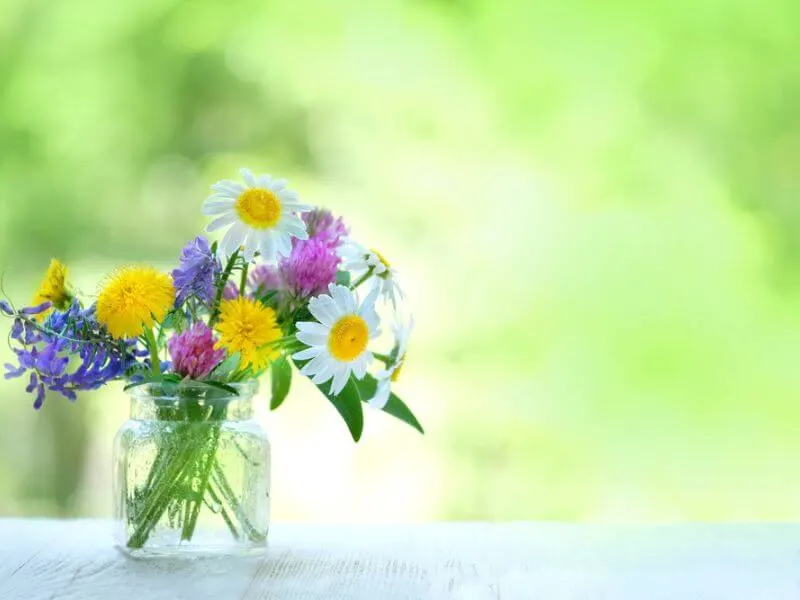
In keeping with tradition, why not place them on the windowsills and in front of your door?
If you are looking to surprise a neighbor or would like to get others involved in the celebration, this is a nice way to do it.
Why not try to get creative and make your own May Flower garland or flower crown?
Garlands would have often been worn around the neck or head as a form of protection.
Decorating Trees
A decorated May Bush or May Bough was often found outside of homes in Ireland, Scotland among other places where Beltane was celebrated.
The tradition likely arose as a protection from the fairies.
In some cases an actual tree may have been decorated, whereas sometimes it was only the branch of a specific tree, such as hawthorn for example.
Related article: Trees of Ireland
The tree decorations would have been made from everyday household objects.
These would have included such as scraps of material, ribbons, colored eggshells or even seashells, if they were available.
You could also try to decorate a tree, or tree branch if that is easier for you.
Simple, handmade decorations that will biodegrade and not pollute the area probably work best. (These are also less likely to impact wildlife.)
Did you know that trees, especially the Oak trees, were very important to the ancient Celts? Discover more in the Celtic Tree of Life.
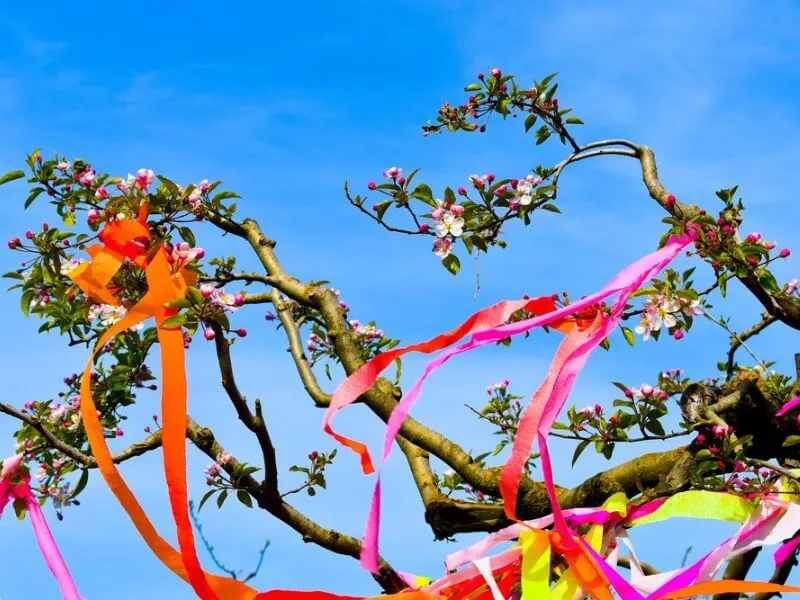
Create your own (Mini) Maypole
Maypoles are a common feature in many May Day celebrations across Europe and beyond.
They have also been used as part of the Beltane celebrations in Ireland in the past.
Maypole dancing with ribbons is often seen as a key part of the start of the summer celebrations.
(This is also an important part of Beltane for Wiccans.)
Perhaps you can attend a Maypole celebration in your vicinity?
If not, you could try to make your own (mini) Maypole using a pole with colorful ribbons and streamers for the celebration.
Dancing around the Maypole could be a fun and memorable activity for all of the family.
Collecting Water
Some ancient practices around Beltane focused on water.
The water collected from the well first thing on May 1 was thought to be very lucky.
According to tradition, the first person to collect the water would receive the luck or blessings.
This was a challenge, as people were wary of the dark, especially at Beltane, due to the superstitious beliefs about fairy activity at the time.
The lucky or blessed Beltane water was therefore collected at first light on May 1.
Sometimes flowers were also brought to the well. This act was to also protect the well or water source for the entire family.
Perhaps you can also make a ritual of gathering water on May 1 as part of your Beltane tradition?
This is possible even if you do not have access to a well and your water comes from a tap or faucet.
You could simply take a moment to appreciate this life giving resource.
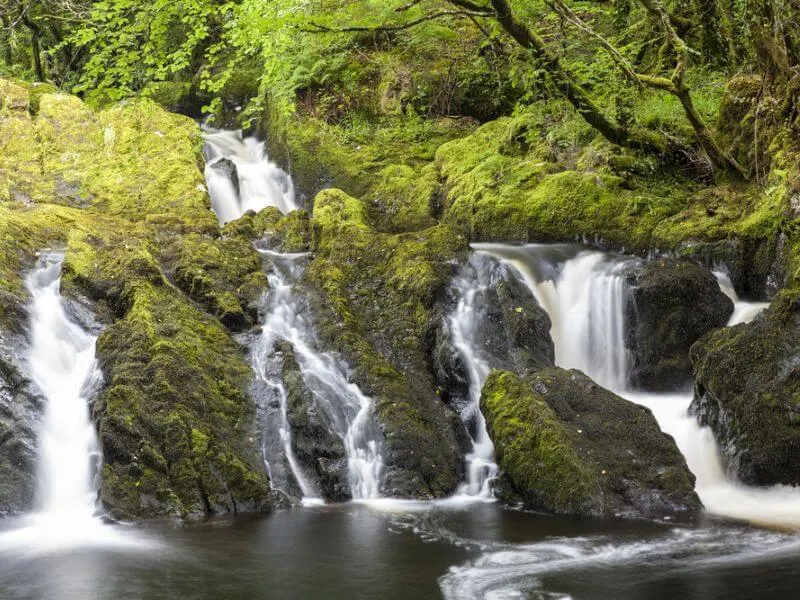
Why not place some flowers near your kitchen sink or in your bathroom to mark the occasion?
If you are lucky enough to have access to a clean stream or other water body, then perhaps you can celebrate Beltane there?
Collecting Dew on May 1
One tradition that was particularly popular with younger people was collecting the dew on May 1.
Dew forms on the ground and vegetation when the water vapor in the air condenses at low temperatures.
These drops of early morning moisture formed on May 1 were thought to be exceptionally good for your complexion.
Some tales even go as far as to say that the Beltane dew held the key to a youthful appearance. Or that it would help you attract the love of your life.
Depending on where you live and the weather conditions, it might be possible for you to try to catch some dew of your own!
Create an altar for the occasion
A Beltane Altar could be as simple or as ornate as you would like.
Here is some inspiration as to what you can include on your altar.
Candles and Fire
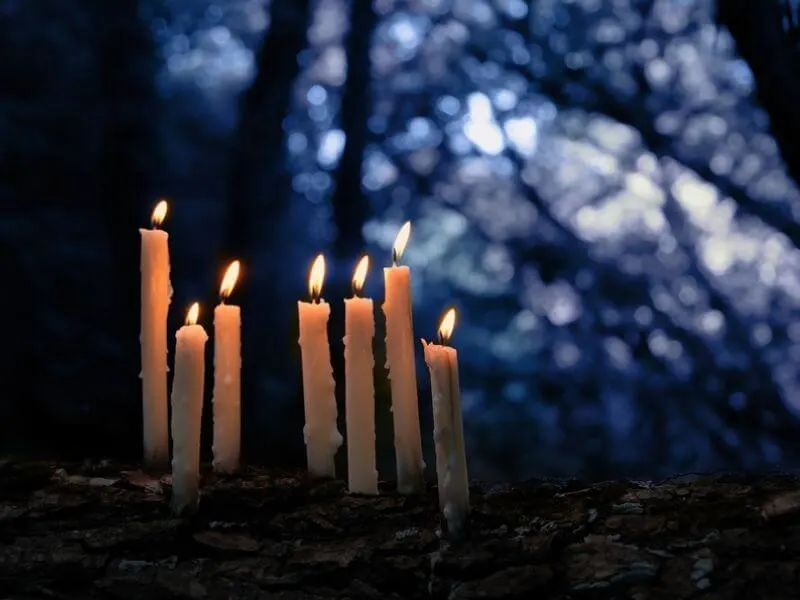
Some of the key elements that you could consider including would be candles.
The use of fire and flame are one of the oldest rituals associated with the Beltane Festival.
As well as being symbolic of the changing seasons, the flame is associated with the belief that it grants protection.
Water
The addition of a candle or two to your altar can help symbolize this ancient tradition.
Another important element of Beltane that can easily be integrated into the altar is water.
If you can manage to collect the early morning dew from May 1, go right ahead and add this.
It might be possible to place a small dish or jar outside to capture the early morning moisture from the air.
For those of you who are lucky enough to live near a little well or stream, perhaps you could collect water early on Beltane Day.
If these options are not available to you, then adding water from your usual source is also perfectly suitable.
Beltane Flowers
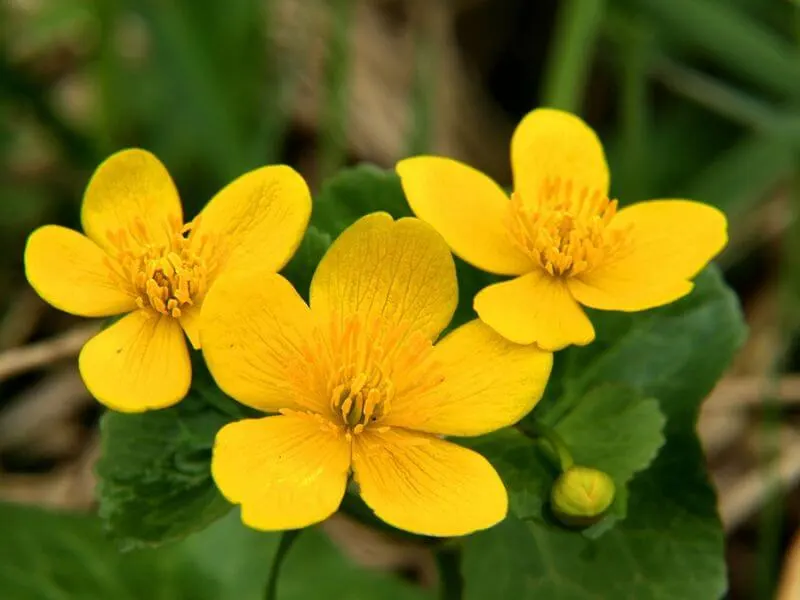
Gathering flowers is a tradition associated with Pagan May Day festival.
Perhaps you have the possibility to collect your own wild flowers to add to your altar.
Yellow, white and blue flowers are often found growing at this time of year.
In Ireland, some of the most common flowers gathered would be marigolds, primroses, daisy and bluebells.
Other flowers known as Marsh Marigolds (Caltha palustris), were known as the Beltane flower or May Flower.
There is a tradition of weaving these flowers into garlands in Ireland and other locations.
You could either create garlands or flower crowns with the flowers or they could be strewn on your altar.
These flowers would have typically been worn by people and occasionally animals to protect them from harm.
They can also be seen as a symbol of growth and fertility and could be included in your own Beltane fertility ritual if you would like.
Beltane Blessings
One way to celebrate the May Day Beltane Festival is to share some Beltane Blessings with family and friends.
You could write these Happy Beltane Blessings on a card and send them by old fashioned mail. (Who doesn’t like getting cards in the mail?!)
Or maybe a quick email or message will also suit perfectly.
The blessings from Beltane are typically connected with growth, fertility, love, protection, abundance and prosperity.
There is a great amount of natural change in the earth and nature around this time.
Beltane is then also a reminder of how we can adapt to new changes in life, even if the outcomes are uncertain.
These blessings are a great way to see the Beltane spiritual meaning as part of everyday life.
Discover some other great blessings in our Irish Blessings for Every Occassion post.
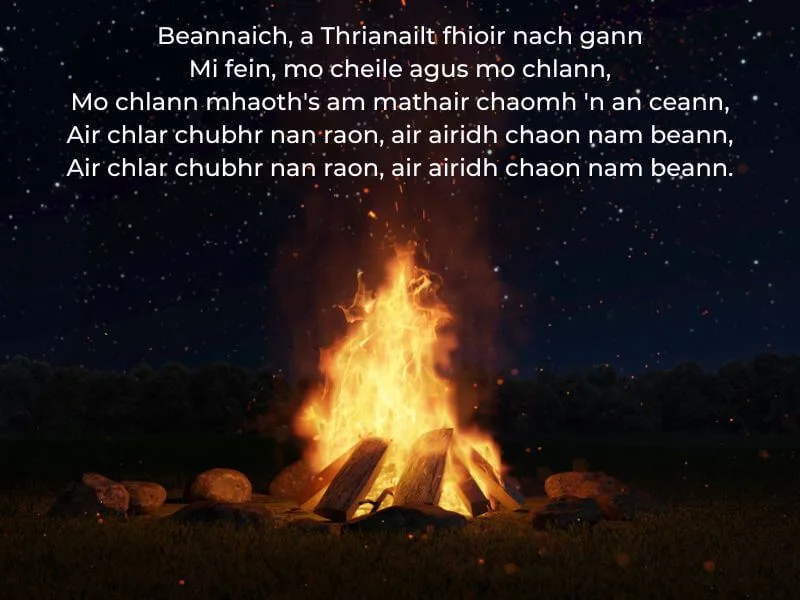
If you are looking for some great birthday blessings, we have you covered there too!
Beltane Foods
Some traditional foods are associated with Beltane, such as Beltane bannock and Caudle.
Beltane Bannock is a type of Scottish oatcake or griddle bread.
There is a long history of making this cake for Beltane.
In Scotland, rituals were performed where one slice of the bannock was marked with charcoal.
The person who unwittingly selected this piece of the bannock would be “sacrificed” to the flames.
Don’t worry, no one was harmed in this more recent version of the tradition. At the last minute, the person to be sacrificed was saved.
However, there is speculation that animal and maybe human sacrifice were part of the very ancient Beltane fire practices.
(There is very limited evidence about the early traditions, so it is very difficult to make a definite conclusion about this.)
Caudle is another type of Scottish food that is typically eaten around Beltane.
This is a type of liquid that has the consistency of custard. It is made from oatmeal, milk, butter and eggs.
For part of a Beltane celebration, you could try to make one or both of these traditional Beltane recipes?
You might also like to have a small get together with friends or family and celebrate Beltane May Day together.
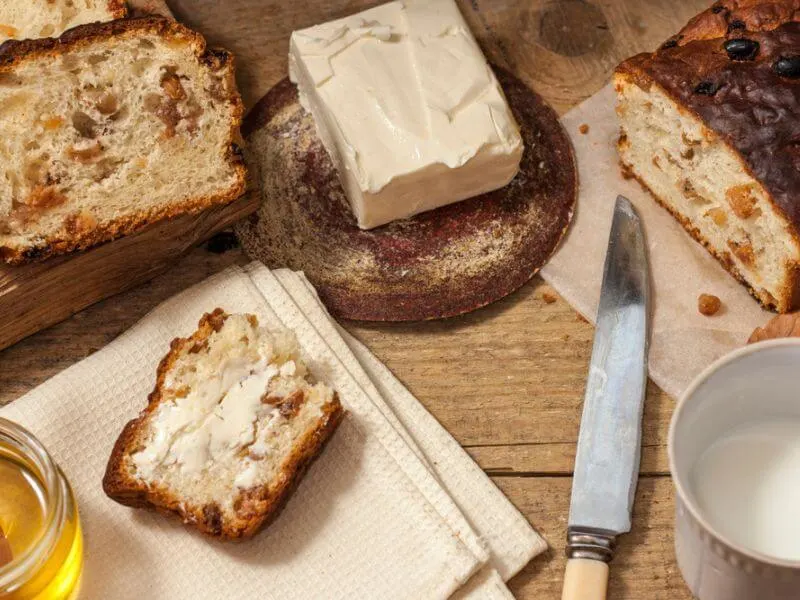
Dairy products were important to the pastoral people who first established the festival of Beltane.
Perhaps you could include some of these milk, butter, cheese products as part of your meal.
Or perhaps if that stirs up your appitite, why not check out the Traditional Irish Breakfast.
Beltane Festival
However you decide to celebrate Beltane, we hope you enjoy it!
Search for Beltane on our website for several other interesting articles on this topic. Find out about the spring celebration of Imbolc too!
